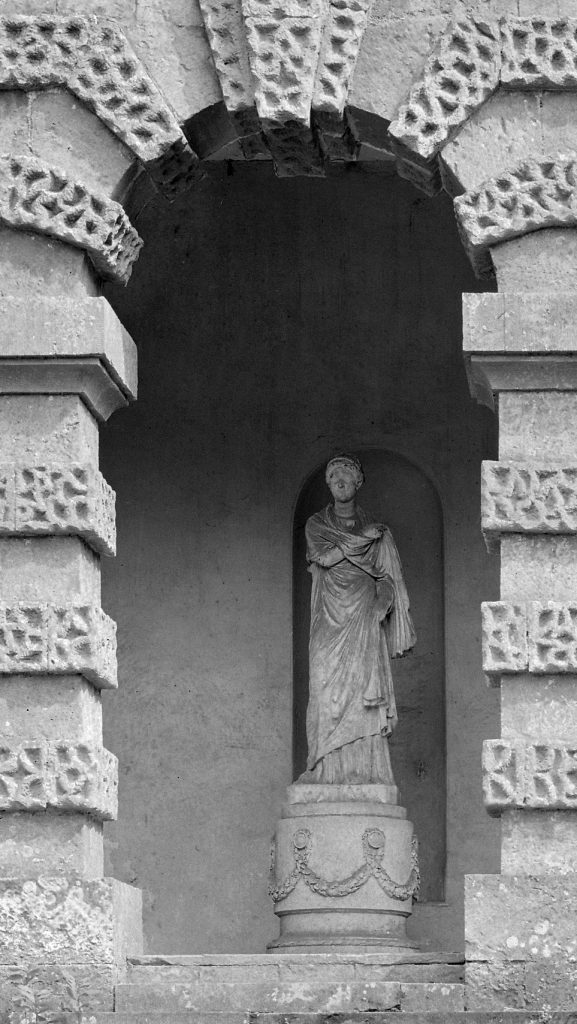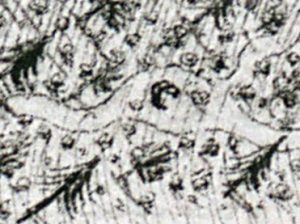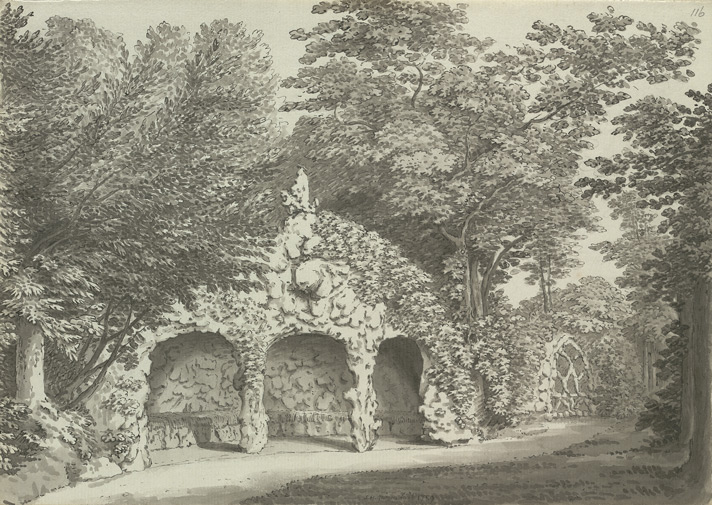A new description of Kings Weston has come to light with some fascinating new detail about the estate dating from the height of its fame. The description comes from an Italian author, Luigi Angiolini, who was drawn to Kings Weston in 1788 by its international reputation. Two features in particular stand out in a translation of his 1790 book “Letters from England, Scotland and the Netherlands”, and are unique insights.
Describing his visit to the grounds Angiolini describes the long-lost statue in the Echo as being a “good ancient Roman” figure. This is the earliest mention of the statue we’ve so far found and adds considerable weight to our belief that it was a classical era state collected on the continent by one of the Southwell family and transported to the estate. Our identification of the pose as conforming to a standard classical portrait model, retrospectively categorised as “small Herculaneum Woman”, always implied that it was not a bespoke commission for the Echo. Had it been we might expect it to have represented a more recognisable deity.
We might hope that Angiolini’s assessment of the statue is based on a knowledge of ancient examples which, as he notes, survived in far greater numbers in his homeland; his countrymen lacking the same reverence or value that Gentlemen travelers from Britain attributed to them.
Sadly it’s likely that the only confirmation of the statue’s origins might come if it can be located, perhaps still, where anecdotal evidence suggests, tipped of off the terrace wall and into the ash pile close to the house.
Angiolini also treats us to another revelation about the landscaped grounds; He mentions an “artificial cave”, made of wood, and hidden in a grove of evergreens. Five years ago we identified an unusual feature in a 1772 map of Penpole Wood which may correspond to Angiolini’s cave, and, at the time, we tentatively attributed it to the landscape designer Thomas Wright. Since then we have proven Wright’s involvement in the design of the Kings Weston grounds and the description of a rustic wooden cave, intertwined with ivy, compares favorably with other known examples of then-fashionable grottoes and seats in Arcadian settings. Such examples of “grotesque architecture” were perishable by nature, an intentional contrast to the permanence of classical garden temples, and so often decayed unrecorded, but a quarried area adjacent to one of the paths through the woods corresponds to the map location.
We are left to imagine what the structure looked like, but the closest example is the root house at Blaise Castle Estate. This was recorded by the artist Samuel Hieronymous Grimm the year after Angiolini’s visit to Kings Weston. Angiolini doesn’t mention visiting Blaise in his writings, and travels quickly on to Aust and the ferry to Wales. We trust that in describing the example at Kings Weston he was not conflating it with a similar rustic seat on the adjacent Blaise estate.
A full translation of Angiolini’s description of Kings Weston follows:
“It was a total satisfaction to visit the palazzo of the Lord; It is not big, but is tasteful, with portico supported by columns in Palladian style, which I liked. I will not speak at length about the different parts that compose it; the paintings are mostly Italian, few originals, many copies, including some very good. I was occupied with the pleasure gardens, even those said orchards, namely gardens of fruits and green vegetables. I will not dwell on the way they are maintained; It would be easier to perform than to describe what I observed. The park, which is well cut with many majestic evergreen trees, obliges one to take a path which is long but not tiring, because one is amused by many diversions of variety and innovation. If ever you came into these parts, do not neglect to educate yourself of a point half a mile from the palazzo, from which you can discover all the Bristol Channel at once, the outlet of ‘Avon into Severn, the Counties of Somerset, Gloucester and Wilts, and a large tract of country of Wales. In the Gardens there is a good ancient Roman statue for which a temple has been built, if not very large, very elegant and dignified. In England, perhaps for the rarity, you have a respect and a reverence for old things that we, too abundant of them, do not. In the midst of an evergreen grove, there is a pleasant surprise, a kind of hidden cave, made of timber and artificially covered in ivy that appears alive. Englishmen are unique in their knowledge of how to contrive art from nature. “





